Gandhi 3.0 - Filled To The Brim With Love
When Nipun’s invitation to join this year’s Gandhi 3.0 retreat landed in our email inbox, it filled us with joy and excitement. Just four months after our marriage in Istanbul, the invitation felt like a delayed wedding present. Our hearts resounded with an immediate YES to be there and something in us already knew that this retreat was going to be life-changing.
In 2011 - I was 19 and just graduated from high school - I went backpacking across India. I remember visiting the Gandhi Ashram in Ahmedabad back then. I read Gandhiji’s autobiography on the ashram lawns, my heart deeply touched by the spirit of the place. During my stay, I also happened to visit Manav Sadhna, Jayeshbhai’s NGO right next to the Gandhi Ashram. That afternoon there was a performance of slum children with some rappers from the US at Manav Sadhna. I took some photos, but didn’t get in touch with anyone from the service ecosystem.
Five years later, through a series of serendipities, Aslinur and I met Khushmita and Sheetal in Turkey. Last year, they returned for our spiritual wedding fest for which we had invited fifty friends from all over the world. I showed them the photos I had taken in 2011. Guess what: One of the pictures had Nimo jumping with kids in his full element! I was amazed. Without knowing I had already set foot into the energy field of ServiceSpace and Moved by Love. It took me seven years of travels and deep transformation in my life to return to it consciously as an invitee of the Gandhi 3.0 retreat.
On the third day of the retreat, we visited the Gandhi Ashram. We sat in a big circle covering almost the entire sandy ground where Gandhi used to pray and meditate every morning during his time at the ashram. The Sabarmati River was calmly flowing behind us as we held a minute of silence. Everybody was profoundly touched by the sacredness of the moment, the sacredness of the sand we were sitting on.
The prayers of Gandhiji are still in the air. They were now renewed by a diverse group of forty people from fourteen countries, ranging from age 26 to 82. Among them spiritual leaders, peace activists, healers, community builders, businesspeople, teachers, a nobel peace laureate, a renunciant, a Gandhian physician and a Californian pastor. What connects them is their belief in inner transformation as a path to change the world for the better. A harmonious balance between inner and outer action - that’s what many people in this group have cultivated in their lives, and for me that’s also what deeply impressed me about ServiceSpace when I first came in contact with it.
Masami San, spiritual force behind the Peace Pole Project, guided us into seven rounds of “May peace prevail on Earth”. Can it be that we all were at this spot at an earlier point in time? I certainly remember myself sitting here as a 19-year-old in 2011. Being present at Gandhi 3.0 as the youngest invitee, together with my wife and with all these brothers and sisters in spirit, feels like a magic closing of that seven-year cycle. I hold immense awe and gratitude in my heart at how life flows in the most beautiful ways, because life knows.
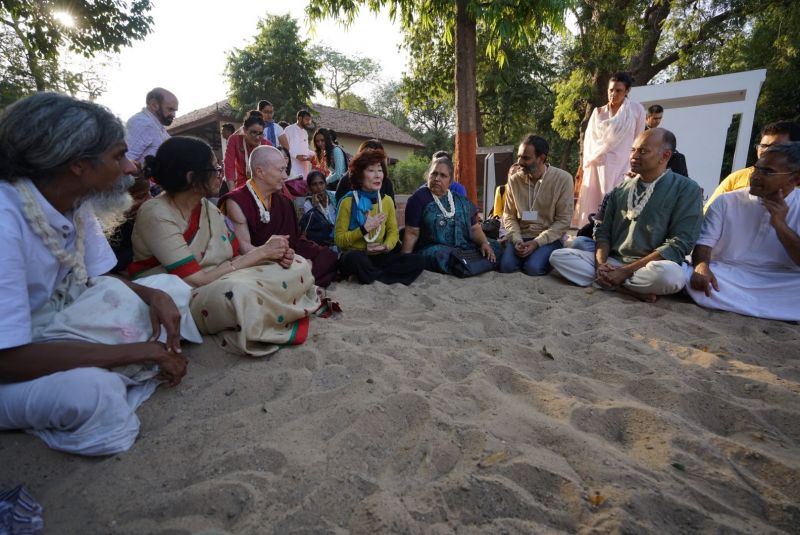
For Aslinur and me, Gandhi 3.0 was the culmination of an intense 100-day pilgrimage across India that included traveling with a community of friends, staying at a Sufi shrine, living in two ashrams, undergoing a panchakarma treatment, piecing together a story for a travel magazine and sitting a 10-day Vipassana course.
Reaching the ESI campus in Sughad, we were full with all the gifts we had received in India, but also exhausted from constantly being on the move. Arriving into the retreat space immediately felt like taking a looooong deep breath. “There is so much intention here”, I told Sehr, who had just flown in from Dubai. Every tree at the ESI has a story. Every corner greets you with an inspiring quote or message of well-wishing. This place is the physical manifestation of Jayeshbhai’s and his father Ishwarbhai’s amazing work to promote sustainable sanitation in India. It is also the outward reflection of the human beauty that Jayeshbhai carries inside.
During all those days the ESI canteen was buzzing with animated conversations. Spontaneous happenings popped up around campus. Even before the official retreat started, we arranged a talk in which Karma Lekshe shared with us how an unlikely family name (Zenn) paved her transformation from a surfer girl into becoming a Buddhist nun. We sat for a healing session with Hawaiian elder and Ho’oponopono master Uncle Bruce who graciously shared the space with local saint Dadaji who happened to drop by. Dadaji looked at us with eyes full of purity and compassion - the “trademark” of a saintly person. During Shin San’s lecture below the Banyan tree the main transmission seemed to lie in his infinitely joyful way of being, followed by the inimitable question “Isn’t it wonderful???”.
Day one of the retreat. Could it get any better after being showered with so much love and beauty during the immersion? From the prayer circle that included dedications in the Indian, Tibetan, Hawaiian and Jewish traditions we moved into the opening round. The art of hosting was perfected by the volunteers who greeted us with hand-written name tags, heart pins, bindis on our foreheads and diaries, each one unique piece of art.
In the Maitri Hall (hall of loving kindness) we took seat on cushions named after qualities such as “gratitude”, “faith”, “patience” or “equanimity”. Tranquil music played and candles flickered in the middle. The space felt blessed and light. There was a sense of intimacy in the air, of having known each other for a long, long time. The field was ripe because it had been nurtured with so much care and intentionality. In that space formal introductions, even our names, were only secondary.
We were invited to reflect on the gifts of our lineages. Through the sharings the tapestry of our newborn group emerged: There were stories of community, of hospitality and generosity, of faith and spiritual wisdom passed on through generations, of elders leading by example, of healing and of collective woundedness. For some moments, it felt to Aslinur and me as if it was just one voice speaking through every individual, revealing itself in its myriad facets. It seemed like the Sufi principle of the “unity of all existence” suddenly and very acutely made sense. For a moment, unity was not a concept, it was experienced truth, as if piercing through the thick veil of illusion that creates our habitual separations from each other.
But what does all this have to do with Gandhi? The volunteers sum it up better than I could: Gandhi 3.0 “is a modern-day experiment of the timeless Law of Love. They call it Gandhi 3.0, where “Gandhi" stands for the age-old principle of leading with inner transformation, and "3.0" represents the many-to-many networks that are popularized by the internet.”

Many-to-many is the way to go in a world that desperately needs new forms of leadership and circles dedicated to sustainable transformation. Rather than looking at Gandhi only from the lens of his political achievements, we wanted to understand and reinterpret his inner values, the fuel that ignited and sanctified his actions. Nipun showed us in his presentation how Gandhi answered the seven guiding questions of ServiceSpace long before the internet was conceived. It was Gandhi’s inner-net that was already running on high bandwidth, or as Danny jokingly said: “He didn’t need 3G or 4G because he was Gandhi-Ji.”
In fact, Mahatma Gandhi showed pure excellence in holding and practicing all these seven aspects in his life. As Gandhiji famously replied when someone asked him if he had a message to humanity: “My life is my message.”
For us, Gandhi 3.0 was itself a testing ground for those seven aspects. I will try to relate my experience of how those questions were practiced in action during the five days we were together.
Can we design for impermanence? - Time and again at the retreat we recalled that what we were living here was a once-in-a-lifetime experience. Meaning: We will never return to this circle again in the same constellation. The days we are together are limited. Many of us will not see each other again physically in this lifetime. So we should not to generate any attachment to this being together, while enjoying every moment to the fullest. This opened a deep field of emergence and trust in the intelligence of the moment. To quote Shin San, an 82-year-old healer from Japan: “Wonderful, today I am still alive. I might die soon. Isn’t that wonderful? I saw the sun rise today. That is enough.”
.jpg) Can we cultivate an untiring mind? - I was amazed about the level of energy at which the volunteers were serving us. Every morning when I met one of them I dreaded to ask “How did you sleep?”, because I knew they had hardly slept at all. Imagining the blissfully surprised faces was enough of a motivation for Sachi and her team to stay up all night and finish that one video which would knock all of us out of our socks! When your mind is flooded with love for all, an untiring mind is possible. That’s how Gandhi dedicated every minute of his life to service, replying to every single letter he received - and using his left hand when his right one would ache from all the writing.
Can we cultivate an untiring mind? - I was amazed about the level of energy at which the volunteers were serving us. Every morning when I met one of them I dreaded to ask “How did you sleep?”, because I knew they had hardly slept at all. Imagining the blissfully surprised faces was enough of a motivation for Sachi and her team to stay up all night and finish that one video which would knock all of us out of our socks! When your mind is flooded with love for all, an untiring mind is possible. That’s how Gandhi dedicated every minute of his life to service, replying to every single letter he received - and using his left hand when his right one would ache from all the writing.
Can we embrace imperfection? - For me, everything in the retreat flowed perfectly, because there was high alignment with Nature. And Nature is always perfect. So “imperfection” seems not like something we consciously practiced :) However, we held in our awareness that we are surrounded by (apparent) imperfection in this world, which in turn is ultimately a reflection of the imperfections inside of us. During the retreat, there was a white crane who visited us on the campus lawn. He was limping across the garden on one leg. Jayeshbhai told us that the crane had been visiting the ESI for the past months. Then he beautifully shifted my perspective from imperfection to perfection: “He is not limping, he is dancing.”
.jpg) Can we create a circle of wounded healers? - There was an acknowledgement that all of us have been wounded in our lives on different levels, physically, emotionally, by those who question or attack our work. While some expressed discomfort with the term “wounded healer”, all of us in our lives have taken steps to heal ourselves, to mend the broken pieces together and fill them with gold as they do in the ancient Japanese art called Kintsugi. Ultimately, healing is what we had come for - healing each other and then healing others. For what else is the process of healing than mirroring each other and helping each other grow?
Can we create a circle of wounded healers? - There was an acknowledgement that all of us have been wounded in our lives on different levels, physically, emotionally, by those who question or attack our work. While some expressed discomfort with the term “wounded healer”, all of us in our lives have taken steps to heal ourselves, to mend the broken pieces together and fill them with gold as they do in the ancient Japanese art called Kintsugi. Ultimately, healing is what we had come for - healing each other and then healing others. For what else is the process of healing than mirroring each other and helping each other grow?
Can we expand circles into a mobius strip? - A mobius strip is a twisted surface that continuously runs between an “inside” and an “outside” circle. Our Gandhi 3.0 circle was in fact surrounded by many wider invisible circles. Beginning with the lineages and ancestors we called into the room on the first day, and then the communities and people we work with in our homes and our friends and our immediate family. Expanding the circle was part of our practice at the retreat. We had two incredible community nights where we opened the field to “outsiders”, sharing the fruits of our togetherness and practicing cross-pollination of all sorts.
Can we hold a dynamic spectrum of values? - The diverse backgrounds of the invitees brought with it a whole array of values stemming from various traditions and spiritual paths. Including different prayers and songs was an important practice during the retreat, and then finding a universal language that transcends all this diversity. However, the real testing ground is when we come together with people in the world where this universal denominator is not easily found. A broad spectrum of engagement enables us to meet people where they are, without judgment of the values they may hold - even if they challenge our own.
Can we integrate multiple forms of capital? - Hugs, smiles and words of gratitude seemed to be the main currency at Gandhi 3.0. Money wasn’t even mentioned once during the retreat. In this way, the scope of giving was expanded beyond the financial. What the volunteers did was priceless and could never have been paid for with money. In fact, as Nipun asserted, had we paid the volunteers with financial capital they wouldn’t have worked as tirelessly as they did. It is intrinsic motivation and love that really invite excellence in serving, not extrinsic motivation through money.
There are so many small moments that will stay with me from the retreat and I could probably write posts about each one of them: Swinging the broom with Uncle Bruce in the morning. Taking a sunrise walk with Shin San who would again and again stop to listen to the birds with full attention. Feeding the cows by the roadside with bundles of grass sold by a farmer. Discovering new gifts and messages on my bed every time I would enter my dorm cell. Hearing the parrots chirp joyfully at different times of the day. Seeing the smiles on the faces of the cooks and kitchen servers who took us on a culinary tour around India. Being hugged by a small boy at the Safayi Vidyalaya Institute who ran towards me and then jumped into my arms like a grasshopper of love. Sharing songs from different faith traditions in the meditation hut.
Thanks to the continuous efforts of all the volunteers the retreat flowed completely effortlessly. For me, the 30 volunteers did nothing short of redefining the meaning of “service”: They excelled in their ability of finding ever new ways of serving us, be it in the kitchen, by providing medical supplies or documenting everything that was shared with a minuteness akin to intelligence officers of the heart.
Nine days after returning from India, I am still full with all these experiences of loving kindness and generosity of the heart. Having been given so much, I sense a natural urge to pay it forward implanted in my heart, and that is probably the biggest gift I have received: I have been filled to the brim so that I can practice giving from a place of infinite gratitude and abundance. Thank you all for being a part of this!
.jpg)
Posted by Marian Brehmer on Feb 8, 2018
SHARE YOUR REFLECTION
12 Past Reflections


On Feb 3, 2018 Zilong Wang wrote:

On Feb 4, 2018 Ana Valdes wrote:

On Feb 4, 2018 Vasco Gaspar wrote:

On Feb 4, 2018 Linda Francis wrote:

On Feb 4, 2018 Kavita Nanavati wrote:

On Feb 8, 2018 Meghna Banker wrote:

On Feb 9, 2018 Trupti Pandya wrote:


On Feb 9, 2018 Brinda wrote:




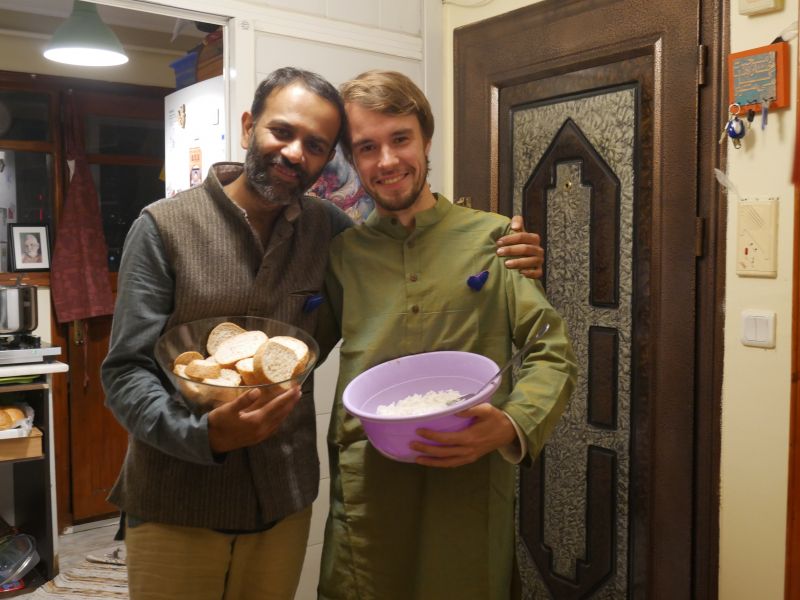
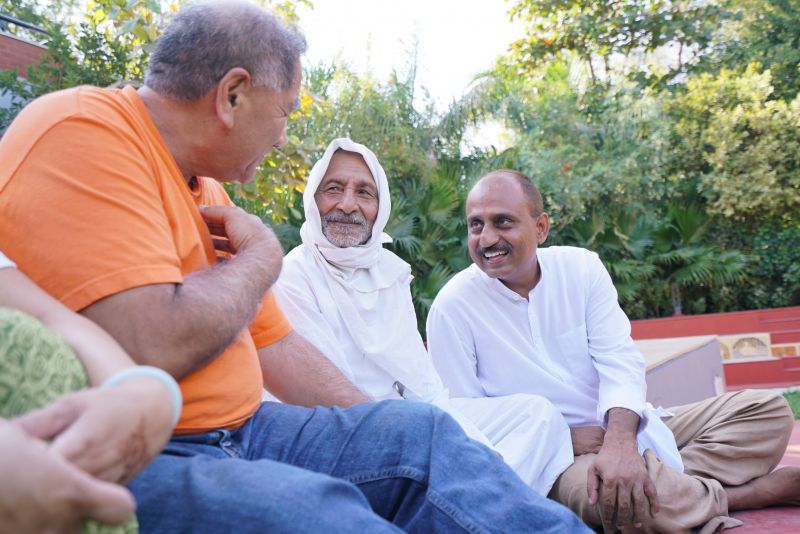
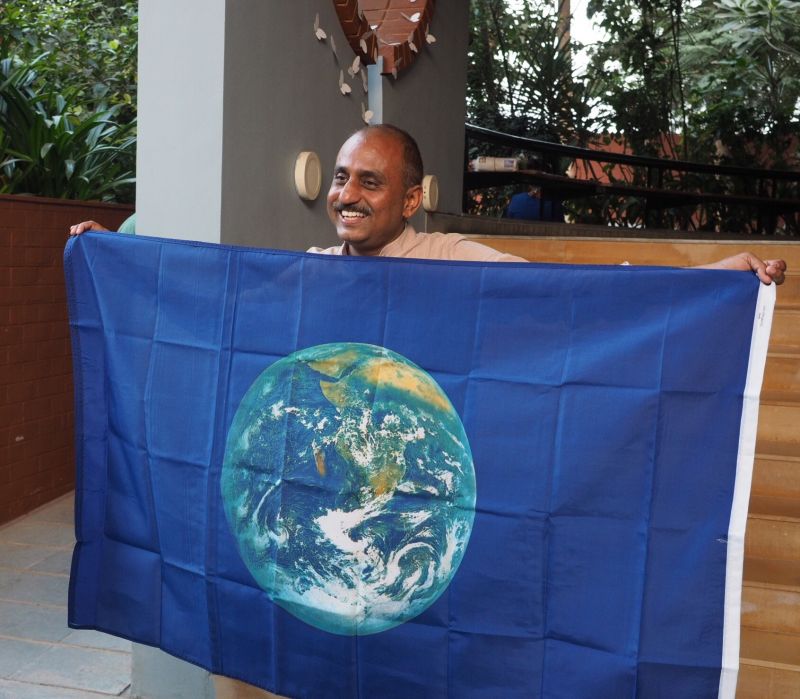
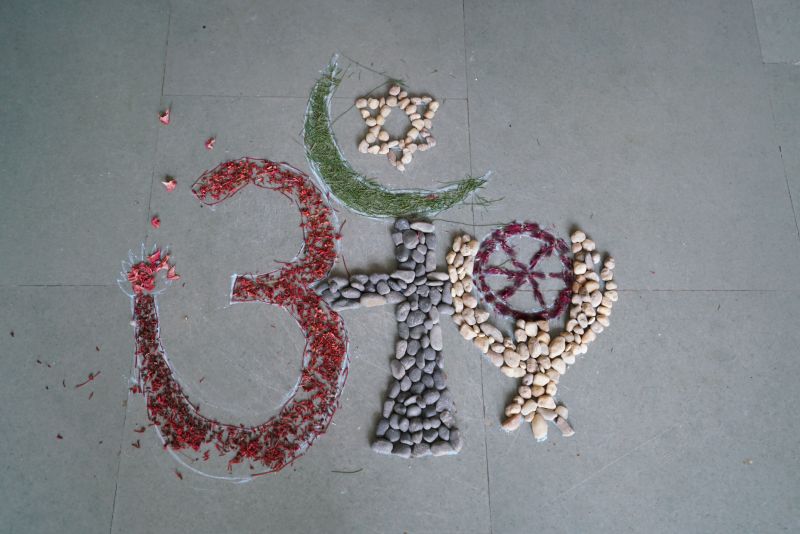
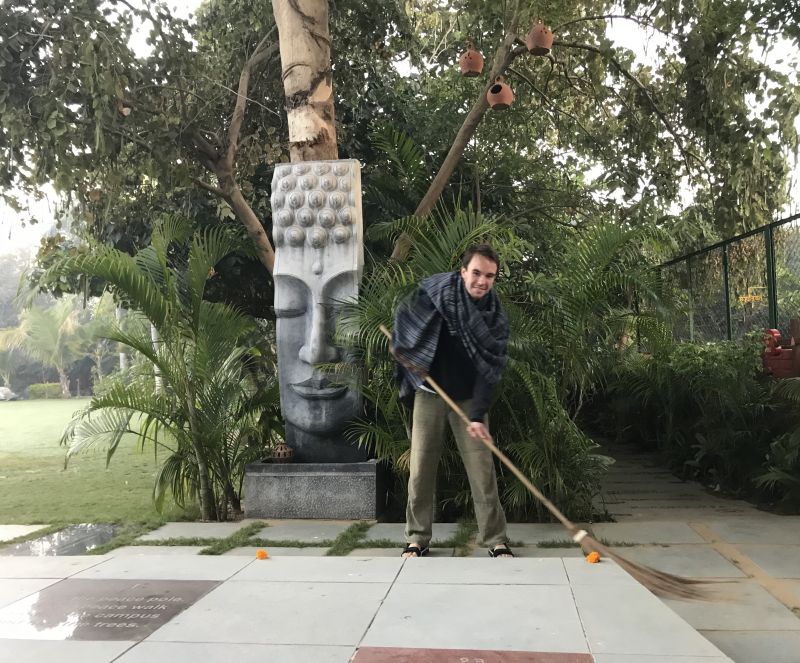
On Feb 3, 2018 Bonnie Rose wrote:
Post Your Reply